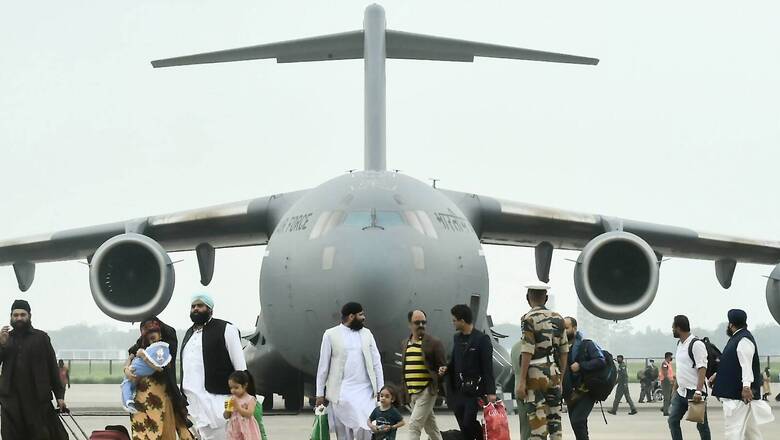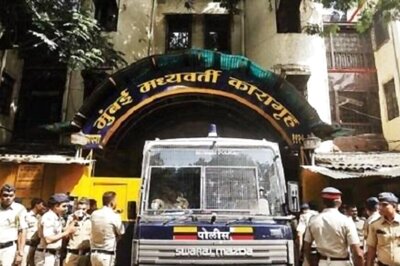
views
The hasty withdrawal of the American troops from Afghanistan last month and the rapid advance of the Taliban to Kabul to capture power created a very insecure environment for the minorities, including the Tajiks, Hazaras and the Sikhs. The Indian government with some reassurances from the Taliban was able to evacuate most of the Indian community, including the Sikhs and Hindus residing in Afghanistan for several generations. The announcement of the Taliban government wherein proscribed terrorists have been made ministers, including Sirajuddin Haqqani, a dreaded leader, has further confirmed the fear of minorities for future blood baths.
Up to early 1980s, three to five lakh Sikhs and Hindus were residing in Afghanistan. The Sikhs were from the Pashtun, Hindkowan and Punjabi ethnicities and were concentrated in the major cities of Kabul, Jalalabad, Ghazni and Kandahar. The population started dwindling during the last four decades of turmoil and violence in the war-torn country. The population of Sikhs in Afghanistan came down to a few thousands by the beginning of this year.
A large number of gurdwaras in Afghanistan were either destroyed or converted into mosques, leaving about a dozen of them in the larger population centres. Most of the Afghani Sikhs owe their allegiance to Hari Singh Nalwa’s reign over Jamrud at the mouth of the Khyber Pass; some converted much earlier when Guru Nanak came to Kabul on his way to Mecca and Madina.
Around 70,000 to 80,000 Sikhs have migrated from Afghanistan to India over the years. A few NGOs have been working towards resettlement of these refugees and most of them have been relocated in Delhi and surrounding areas. Some of them have moved in with their relatives in India.
ALSO READ | The Strategic Disconnect between India and US Has Been Revealed by Afghanistan
The Sikhs in Kashmir
After the exodus of five per cent of Kashmiri population of Hindus from the Kashmir Valley in the late 1980s, somehow the Sikhs who were mainly located in the villages stayed back and resisted the pressures from the majority Muslim community to migrate. There are around 1.5 lakh Sikhs located in more than hundred villages in districts of Kupwara, Baramulla, Budgam, Pulwama, Srinagar and Anantnag. The Muslim and Sikh communities have been living in reasonable religious harmony but a large number of Sikhs have left farming in the villages and moved to major towns. In the past, there have been certain isolated and one-off violent actions against the Sikhs, like the Chittisinghpura incident of 2000 wherein 36 innocent members of the community were killed by the terrorists in the wake of President Clinton’s visit to India. Sikhs form a little less than two per cent of the population of Kashmir Valley.
The Kashmiri Sikhs do not have reservations for government jobs on the lines of Kashmiri Pandits and have been fighting for them. Recently, there was tension between Muslims and Sikhs in Kashmir over the forced conversion of two Sikh girls to Islam through marriage with Muslim men. The issue was resolved through intervention by a Delhi-based Sikh community leader who led the protests by Sikhs in Srinagar. Some Sikh girls who are well-educated but did not get suitable jobs have converted willingly, in their aspiration for better living standards. Since the removal of Article 370 from Jammu and Kashmir, demand for reservations in government jobs has found further traction among the Sikh community.
Can Afghani Sikhs Resettle in Kashmir?
The Sikh refugees from Afghanistan can be resettled in Kashmir Valley along with the existing Sikh population. The main advantage would be that both Afghanistan and Kashmir being mountainous regions, the refugees will get to settle in similar environments. The Sikhs in both the places have had a history of living in harmony with Muslim community. The enhanced numbers will also give some additional strength to the Kashmiri Sikhs, who have been migrating to the urban centres for security reasons.
Reverse relocation from towns to the villages should be engineered for the Sikhs so that they can return to farming in their villages in a secure environment. Suitable presence of Rashtriya Rifles units of the Indian Army and the Central Armed Police Forces in close proximity to these minority pockets will give them an inherent security cover. The Sikhs in Kashmir have a history of standing up to and fighting the invading Kabali tribesmen who had crossed over from Pakistan in 1947 and were plundering Baramulla and Sopore towns.
The experiment of resettling Afghani Sikhs in Kashmir if proved successful will pave the way for the Kashmiri Pandits to return to their homeland and properties in Kashmir. Additionally, Sikhs and Hindus from the northern states should be encouraged to settle down in Jammu and Kashmir if they bring in capital to invest and improve the economy of the state.
Lt Gen I.S. Singha, AVSM, VSM (Retd) was the Head of the Mission and Force Commander in Golan Heights in the Middle East. The views expressed in this article are those of the author and do not represent the stand of this publication.
Read all the Latest News, Breaking News and Assembly Elections Live Updates here.

















Comments
0 comment